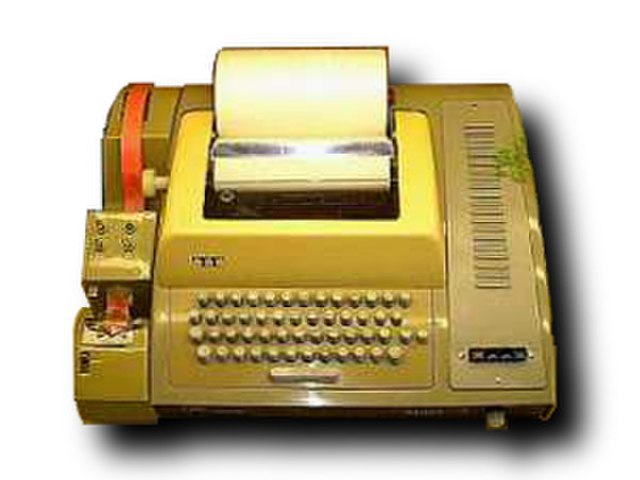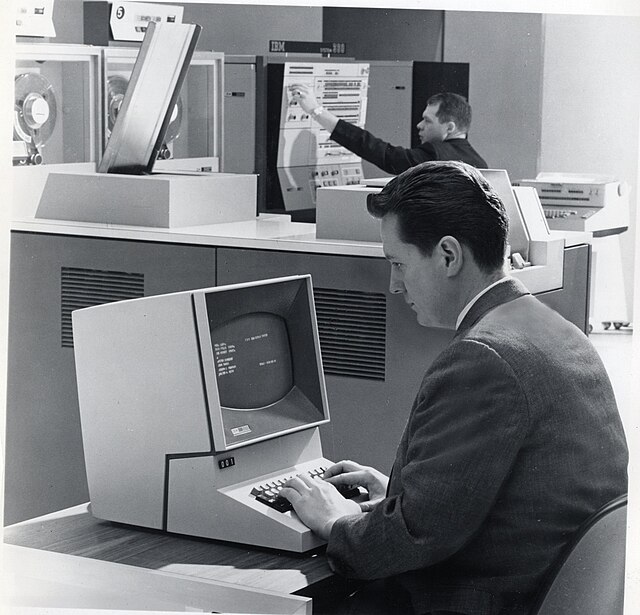Videotex was one of the earliest implementations of an end-user information system. From the late 1970s to early 2010s, it was used to deliver information to a user in computer-like format, typically to be displayed on a television or a dumb terminal.
Videotex example screen showing its graphics capabilities, 1978. As in teletext, predefined, fixed-width graphics characters in multiple colors could be used to create an image.
Minitel was perhaps the most successful videotex service worldwide, using this terminal, c. 1982.
Loewe Multicom E, a late 1980s videotex terminal
An Alex terminal, photographed in 2006
A computer terminal is an electronic or electromechanical hardware device that can be used for entering data into, and transcribing data from, a computer or a computing system. The teletype was an example of an early-day hard-copy terminal and predated the use of a computer screen by decades. Starting in the mid-1970s with machines such as the Sphere 1, Sol-20, and Apple I, terminal circuitry began to be integrated into personal and workstation computer systems, with the computer handling character generation and outputting to a CRT display such as a computer monitor or, sometimes, a consumer TV.
A Teletype Model 33 ASR teleprinter, usable as a terminal
Closeup of an IBM 2741 printing terminal, which used a changeable Selectric "golfball" typing element and was faster than the earlier teletype machines
IBM 2260
ADM-3A








